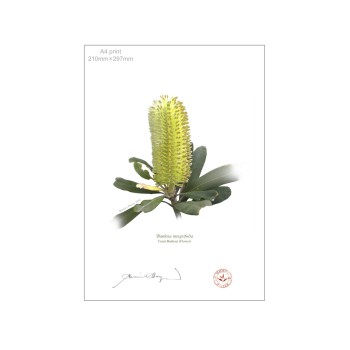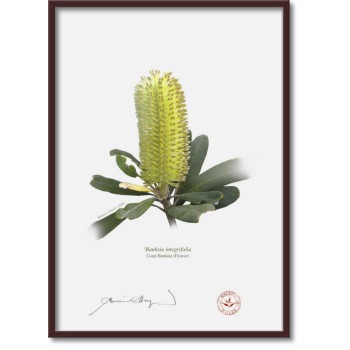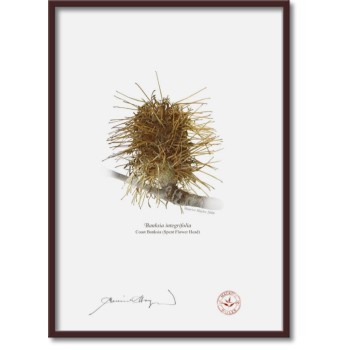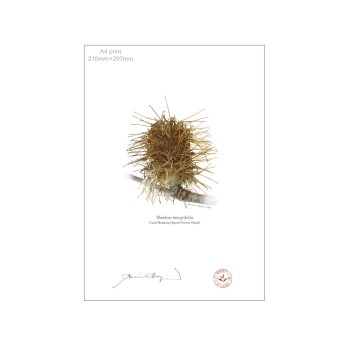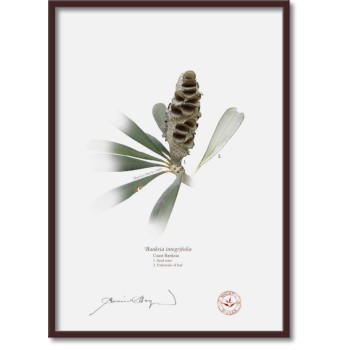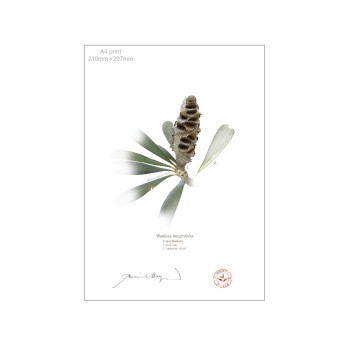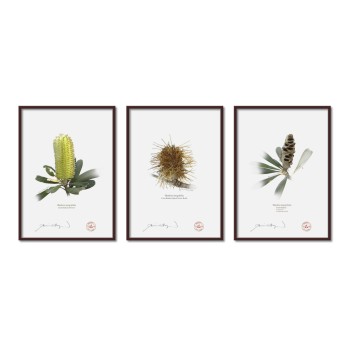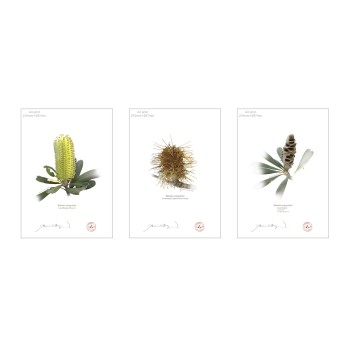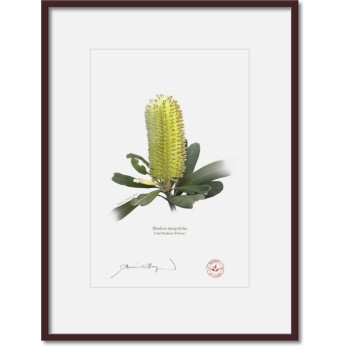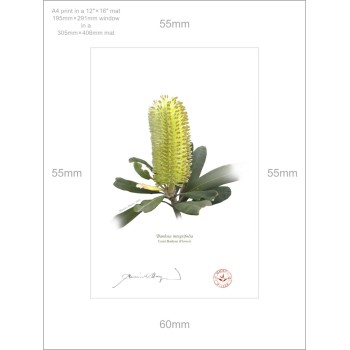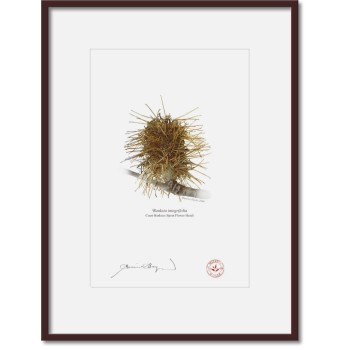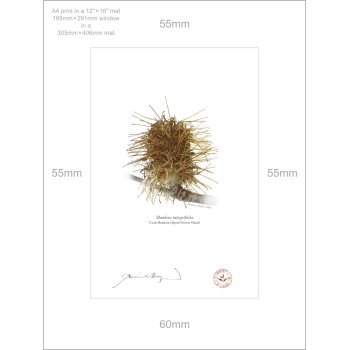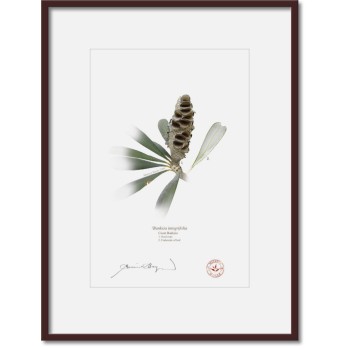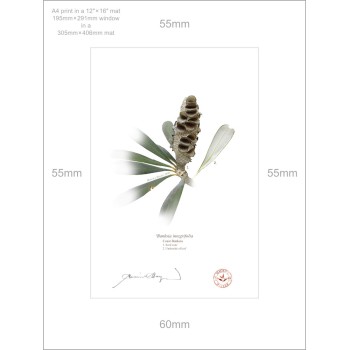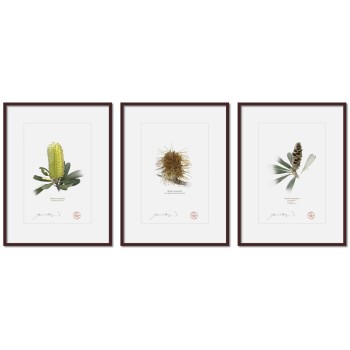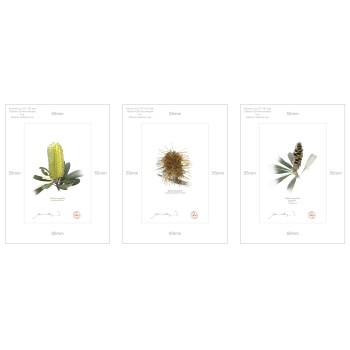Australian Botanical prints by artist Maurice Hayler, designed to endure.
Each print carries the artist’s signature and is stamp-embossed for authentication.
Our art is printed with care on Hahnemühle fine art archival paper with archival Epson UltraChrome pigment inks, good for at least 75 years. View all print and mat sizes here.
Please Note: that all orders typically leave within one to two business days.
We can (and do) process urgent and express orders on request.
Availability: In Stock
Ex Tax: $44.55
Please note that frames are not included and those shown in images are for display purposes only.
We do offer custom framing should this interest you.
All available print and mat sizes are covered in detail here, but to summarise:
Flat prints are printed sheets, trimmed to size, with no mat or backing supplied.
We offer the following sizes:
5″ × 7″ (127mm × 178mm)
8″ × 10″ (203mm × 254mm)
A4 (203mm × 297mm)
Our matted prints are the same printed sheets, but placed in archival (acid-free) mat and backing ready to frame.
(You can read more about our acid-free materials here.)
These come in the following sizes:
5″ × 7″ in a white 8″ × 10″ mat (outer dimensions are 203mm × 254mm)
8″ × 10″ in a white 12″ × 14″ mat (outer dimensions are 305mm × 356mm) (please note this is a non-standard size: read more here)
A4 in a white 12″ × 16″ mat (outer dimensions are 305mm × 406mm)
More detailed information about all print and mat sizes is here.
Botanical Information:
Family: ProteaceaeGenus: Banskia
Species: integrifolia
Meaning of name:
Banksia, after Sir Joseph Banks (1743–1820), an English naturalist and botanist who accompanied (then) Lieutenant James Cook on the Endeavour in 1768–1771, and who did much to bring Australian botany to the European world
integrifolia is from Latin: integer, entire + folium, leaf. A reference to the leaf margins (edges) being entire (smooth)
As its name suggests, the Coast Banksia is distributed along the eastern coast of Australia, from Queensland into New South Wales and Victoria. It is very hardy and readily tolerates wind and salt spray. Banksia integrifolia can range from 5m (16 ft) to 15m or even 25m (49 ft to 82 ft) in height, with a spread of about 3m (10 ft).
There are three subspecies:
- Banksia integrifolia subsp. integrifolia, found from southern Queensland down into Victoria
- Banksia integrifolia subsp. compar, found in northern Queensland
- Banksia integrifolia subsp. monticola, found in the mountain ranges of central and northern New South Wales
The nectar is an invaluable source of food for many nectar-feeding birds and mammals, especially in autumn when the flowers are at their peak, as few other plants flower during this time. The nectar also made useful bush food for people — Australian Aborigines would obtain nectar by stroking the flowers and licking their hands, while early European settlers used the nectar for sore throats and colds.
Though honey made from the nectar is medium quality and of low commercial value, beekeepers prize Banksia integrifolia as it flowers over autumn and winter when little else is flowering, and thus helps keep their hives going during this time.
This print features in the Life of a Banksia Flower triptych collection.



